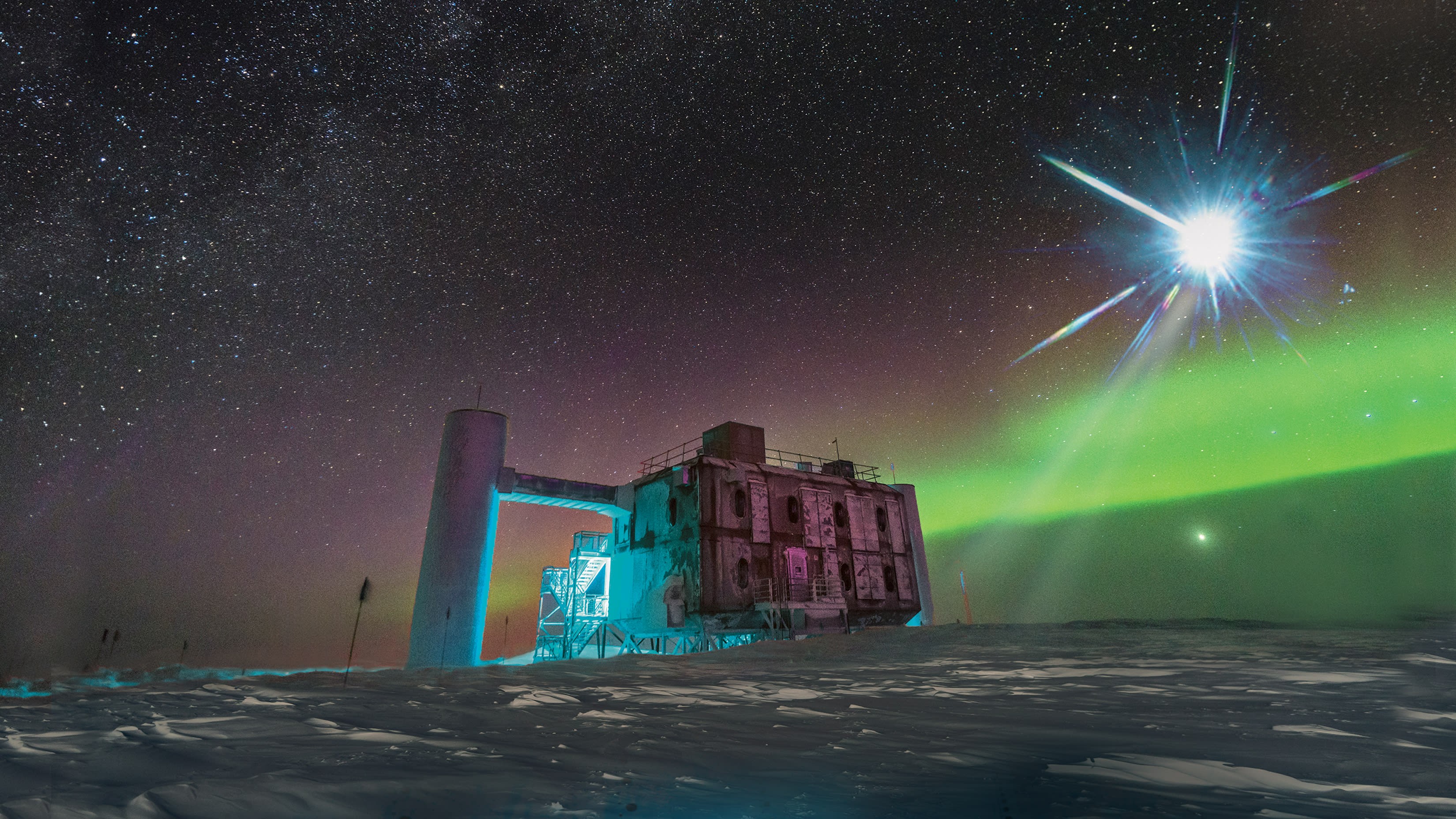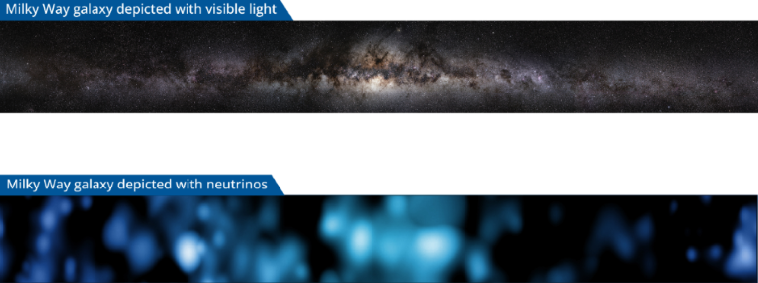Neutrino map of the galaxy is 1st view of the Milky Way in 'anything other than light'
Scientists at the IceCube Neutrino Observatory have used 60,000 neutrinos to create the first map of the Milky Way made with matter and not light.

Scientists have traced the galactic origins of thousands of "ghost particles" known as neutrinos to create the first-ever portrait of the Milky Way made from matter and not light — and it's given them a brand-new way to study the universe.
The groundbreaking image was snapped by capturing the neutrinos as they fell through the IceCube Neutrino Observatory, a gigantic detector buried deep inside the South Pole's ice.
Neutrinos earn their spooky nickname because their nonexistent electrical charge and almost-zero mass mean they barely interact with other types of matter. As such, neutrinos fly straight through regular matter at close to the speed of light.
Related: Ghostly neutrino particles are blasting out of a nearby galaxy, and scientists aren't sure why
Yet by slowing these neutrinos, physicists have finally traced the particles' origins billions of light-years away to ancient, cataclysmic stellar explosions and cosmic-ray collisions. The researchers published their findings June 29 in the journal Science.
"The capabilities provided by the highly sensitive IceCube detector, coupled with new data analysis tools, have given us an entirely new view of our galaxy — one that had only been hinted at before," Denise Caldwell, director of the National Science Foundation's physics division, which funded the research, said in a statement. "As these capabilities continue to be refined, we can look forward to watching this picture emerge with ever-increasing resolution, potentially revealing hidden features of our galaxy never before seen by humanity."

How to catch a ghost particle
Every second, about 100 billion neutrinos pass through each square centimeter of your body. The tiny particles are everywhere — produced in the nuclear fire of stars, in enormous supernova explosions, by cosmic rays and radioactive decay, and in particle accelerators and nuclear reactors on Earth. In fact, neutrinos, which were first discovered zipping out of a nuclear reactor in 1956, are second only to photons as the most abundant subatomic particles in the universe.
Get the world’s most fascinating discoveries delivered straight to your inbox.
Despite their ubiquity, the chargeless and near-massless particles' minimal interactions with other matter make neutrinos incredibly difficult to detect. Many famous neutrino-detection experiments have spotted the steady bombardment of neutrinos sent to us from the sun, but this cascade also masks neutrinos from more unusual sources, such as gigantic star explosions called supernovas and particle showers produced by cosmic rays.
To capture the neutrinos, particle physicists turned to IceCube, located at the Amundsen-Scott South Pole Station in Antarctica. The gigantic detector consists of more than 5,000 optical sensors beaded across 86 strings that dangle into holes drilled up to 1.56 miles (2.5 kilometers) into the Antarctic ice.

While many neutrinos pass completely unimpeded through the Earth, they do occasionally interact with water molecules, creating particle byproducts called muons that can be witnessed as flashes of light inside the detector's sensors. From the patterns these flashes make, scientists can reconstruct the energy, and sometimes the sources, of the neutrinos.
Finding a neutrino's starting point depends on how clear its direction is recorded in the detector; some have very obvious initial directions, whereas others produce cascading "fuzz balls of light" that obscure their origins, lead author Naoko Kurahashi Neilson, a physicist at Drexel University in Philadelphia, said in the statement.
By feeding more than 60,000 detected neutrino cascades collected over 10 years into a machine-learning algorithm, the physicists built up a stunning picture: an ethereal, blue-tinged image showing the neutrinos' sources all across our galaxy.
The map showed that the neutrinos were being overwhelmingly produced in regions with previously detected high gamma-ray counts, confirming past suspicions that many ghost particles are summoned as byproducts of cosmic rays smashing into interstellar gas. It also left the physicists awestruck.
"I remember saying, 'At this point in human history, we're the first ones to see our galaxy in anything other than light,'" Neilson said.
Just like previous revolutionary advances such as radio astronomy, infrared astronomy and gravitational wave detection, neutrino mapping has given us a completely new way to peer out into the universe. Now, it's time to see what we find.

Ben Turner is a U.K. based writer and editor at Live Science. He covers physics and astronomy, tech and climate change. He graduated from University College London with a degree in particle physics before training as a journalist. When he's not writing, Ben enjoys reading literature, playing the guitar and embarrassing himself with chess.
 Live Science Plus
Live Science Plus





